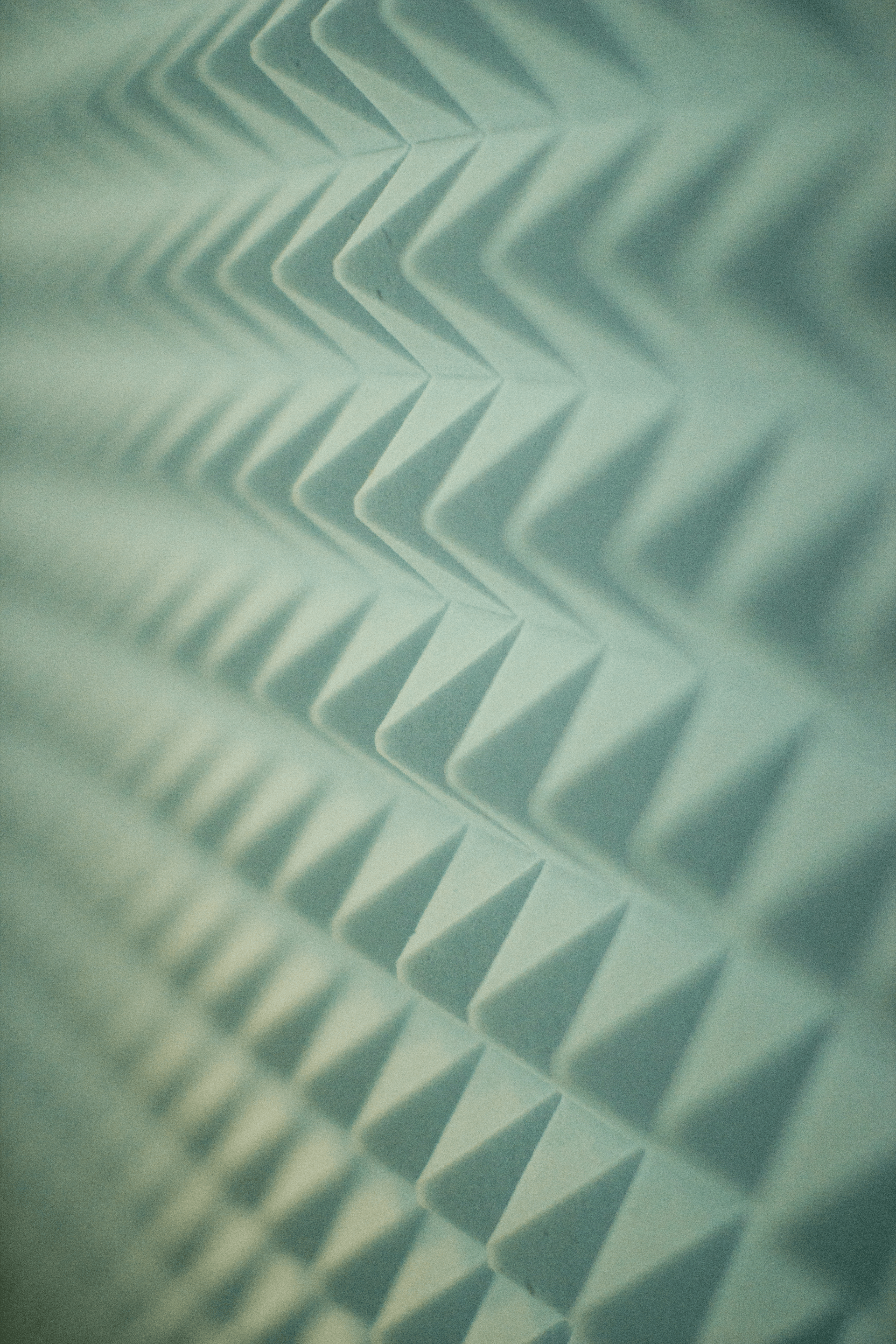Soundproofing and Acoustic Materials Information
 Soundproofing and acoustic materials are used to attenuate, deaden, or control sound and noise levels from machinery and other sources for environmental amelioration and regulatory compliance. Soundproofing and acoustic materials can use either noise reduction or noise absorption. Noise reduction reduces the energy of sound waves as they pass through. Noise absorption suppresses echoes, reverberation, resonance, and reflection.
Soundproofing and acoustic materials are used to attenuate, deaden, or control sound and noise levels from machinery and other sources for environmental amelioration and regulatory compliance. Soundproofing and acoustic materials can use either noise reduction or noise absorption. Noise reduction reduces the energy of sound waves as they pass through. Noise absorption suppresses echoes, reverberation, resonance, and reflection.
Specifications
Important specifications for noise reduction and noise absorption products include noise attenuation and noise reduction coefficient.
- Noise attenuation is the reduction in sound pressure level (SPL) that an acoustic product provides. It is measured in decibels (dB).
- Noise reduction coefficient (NRC) is the average of an acoustic material’s absorption coefficients at a specified set of frequencies, typically 256 Hz, 512Hz, 1024 Hz, and 2048 Hz. Absorption coefficients range between 0 and 1 and are often evaluated at many frequencies in the audible range in order to create a performance curve for the material throughout the audio spectrum.
Types
Many different types of soundproofing and acoustic materials are available.
- A vinyl acoustic barrier blocks airborne noise (street traffic, voices, music) from passing through a wall, ceiling, or floor. Because vinyl acoustic barriers are made of heavy, limp vinyl, they are usually built into the structure and then covered with a finished surface like sheet rock or paneling.
- Soundproofing foam dampens noise by making sound waves pass through multiple foam cells and foam cell walls. A soundproof room contains soundproofing material in the walls, floors, and ceilings.
- Acoustic foam and acoustic ceiling tile absorb sound to minimize echo and reverberation within a room. They do not block noise from transmitting through walls and ceilings.
- Soundproof doors and soundproof windows are designed to reduce the transmission of sound.
- Building techniques such as double wall construction and staggering wall studs can improve the soundproofing of a room.
- A soundproof wall can incorporate soundproofing and acoustic materials to meet desired sound transmission class (STC) values. For example, a wall with an STC rating of 25 would allow normal speech to be easily understood. With an STC rating of 50, shouting would be barely audible. A wall made with double 5/8-inch drywall on steel studs has an STC rating of 50. To measure the sound absorption of soundproofing and acoustic materials, it is important to determine the frequency range of interest, for example from 100 Hz to 5,000 Hz.
Standards
Soundproofing and acoustic materials are covered by the International Organization for Standardization (ISO) Technical Committee 43 (acoustics) and by ASTM International, formerly called the American Society for Testing and Materials, ASTM Committee E33 (environmental acoustics), including ASTM E90. For fire safety considerations, soundproofing and acoustic materials can be covered by ASTM D3574 and D3675.
Related Information
Engineering360—How Soundproofing Acoustic Foam Actually Works
Image credit:
Victorgrigas / CC BY-SA 3.0
- Acoustic Barrier / Panel
- Acoustic Curtain
- Acoustic Fence
- Adhesive / Tape
- Architectural
- Baffle
- Brackets
- Ceiling Attachment
- Ceiling Panel / Tile
- Compound (Spray)
- Compound (Trowel)
- Flameproof
- Floor Matting
- Foam Sheet / Roll
- Free Standing
- Pipe / Duct Lagging
- Pipe / Line Mount
- Soundproof Door
- Spray / Trowel
- Surface Convolutions
- sound absorbing material
- noise reduction coefficient
- automotive acoustic insulation
- butyl acoustic insulation
- MEMS acoustic speaker
- sound absorption panels
- surplus soundproofing
- Turbine Exhaust Stack Silencer
- viscoelastic soundproofing
- compressed fiberglass acoustic panels
- diesel engine soundproofing
- drain pipe soundproofing
- duct board soundproofing
- eggshell foam soundproofing
- EVA foam soundproofing
- expandable foam insulation soundproofing
- fabric acoustic panels
- fireproof acoustic insulation
- high density vinyl soundproofing
- HVAC duct soundproofing
- marine engine soundproofing
- mass loaded vinyl soundproofing
- melamine acoustic panels
- non fiberglass acoustic insulation
- outdoor acoustic panels
- perforated acoustic panels
- sound acoustic panels
- vinyl barrier soundproofing
